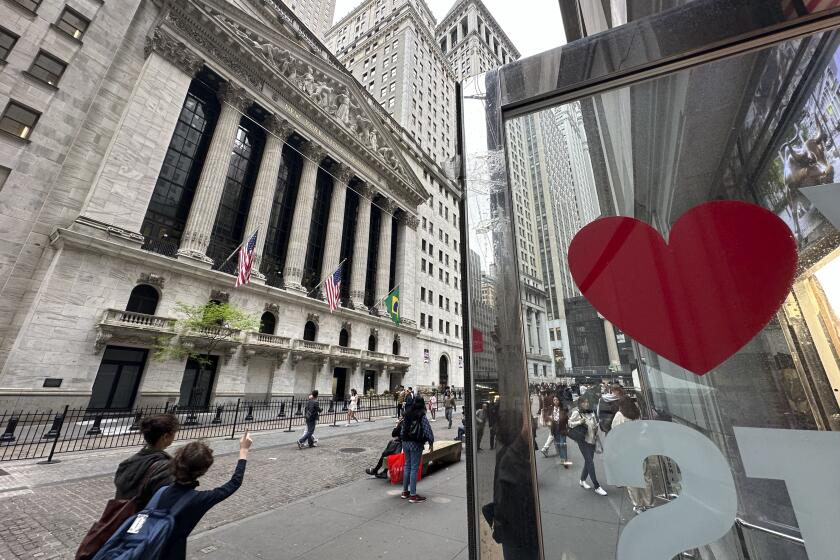Saving History, Tax Credits : Partnerships Helped by New IRS Regulations
George Washington may, or may not, have slept here and blessed the place with some sort of immortality.
Would the same immortality surround a downtown office building in Indianapolis that had been a pre-Civil War terminal of the Underground Railroad? Why not?
What makes one structure “historic” and worthy of restoration, and another of the same age an eyesore, is a highly judgmental weeding-out process involving local, state, regional and federal historians and architectural experts.
And the very fact that the restoration of historic structures is so judgmental and esoteric makes last year’s survival of the tax credits that encourage it all the more remarkable.
Conventional leveraged real estate limited partnerships came out of the drastic “tax reform” drive both bloodied and bowed as investors were suddenly and strictly limited in the amount of “passive losses” (debt service, primarily) they could write off to the amount of “passive income” generated by the partnership--its positive cash flow.
What the tax restructuring did accomplish, according to Terrence P. Sullivan, general partner of Boston-based Historic Preservation Properties, was to drive the fat cats out of the restoration field.
‘A Nice Business’
For wealthy investors the incentives for participating in private placement limited partnerships in the restoration field (contrasted to multi-investor public placements) were virtually eliminated.
“It was a nice business,” Sullivan said in a recent interview. “You could finance, say, a $15-million building with $10 million in debt and $5 million in equity and then sell it off in 35 units of $150,000 apiece--in $50,000 chunks.”
But phased out were the tax advantages for those with incomes between $200,000 and $250,000.
An old hand in limited partnership private placements, Sullivan and the other general partners in Boston Historic Properties have put together about 60 such syndication transactions--spanning 22 states--and have raised more than $100 million in restoration property equity. Historic Preservation Properties, however--a $30 million offering in 30,000 units of $1,000 each and a minimum of five units--is the group’s first post-tax reform public syndication.
Twofold Attraction
“The new two-tiered tax credit, 20% for historic restoration and 10% for properties more than 50 years old,” Sullivan said, “actually created a more powerful investment tool for bringing capital formation into restoration than the old tax structure did.”
The attraction is twofold: first the direct 20% credit, lowering the investor’s April 15 tax bite, and then, secondly, the freedom to tax-shelter up to $25,000 in passive losses.
“So,” Sullivan added, “the new rehabilitation tax credit is available to a much broader spectrum of people than before--to those with annual incomes in the $30,000-a-year ($50,000 under California law) to $200,000.”
Today, the limited partner in a historic restoration partnership can apply that $25,000 of passive loss not only against his passive income (from any rents generated by the partnership), Sullivan explained, but also against his other income from wages, interest and dividends--the only type of real estate limited partnership retaining this feature.
At the current maximum tax level of 38.5%, this $25,000 write-off translates as $9,625 in tax-sheltered income. This will drop, however, to $7,000 in subsequent years, when the maximum tax rate declines to 28%.
(Taxayers with taxable income over a certain level will lose the benefit of the 15% rate on lower amounts of income and be subject to an additional 5% tax.)
Substitute for IRAs
“What we’ve found,” Sullivan said, “is that some of our limited partners are using their investment in Historic Preservation Properties as a substitute for the individual retirement account, which did get knocked out in the tax overhaul.
“By investing $5,000 a year, and liquidating in a five-to-10 year period, the 20% tax credit allows them to accomplish the same goal of knocking their taxes down by about $1,000 a year and having more liquidity in a shorter time.”
In addition to Historic Preservation, Sullivan added, there are two other limited partnerships active in public offerings built around the restoration field: Dover Historic and Historic Landmarks for Living, both based in Philadelphia, “plus a couple of smaller, $18-million partnerships but which are pretty regional.”
With its $30-million offering, Historic Preservation is aiming at acquiring--on a two-third debt, one-third equity ratio--about 10 properties--two of which are already in place--splitting about 45% residential, 45% office and “10% representing some sort of commercial application,” Sullivan added, “perhaps retail.”
But “historic” is the key. The structure must be listed with the Department of the Interior’s National Register of Historic Places in Washington.
“State historical organizations nominate properties,” according to Jeffrey Shrimpton of the National Register’s reference department, “and the final decision is made by our review board before it can be listed. It can either be historically significant or architecturally significant and, of course, at least 50 years old. But significant is the key.”
Historic Integrity
And while more than $10 billion has been channeled into historic rehabilitation since the tax credits were established in 1976, according to the Department of Interior--overwhelmingly through private placements so far--only a tiny fraction of the 500,000 buildings on the Register’s list have been touched.
And historic integrity in the restoration is a “must” Sullivan added. “The standards are very tough and are overseen by local historic groups. Any suggestion that you’re simply ‘facading’ the building and your tax credit drops from 20% to 10%, the credit you get for simply restoring any building over 50 years old.”
Although, so far, most of the restoration has been centered in the East and South, “we’ve done projects in such places as Fargo, N.D, and Omaha,” Sullivan said, “and we’ve seriously looked at buildings in Oakland and here in Los Angeles. California is inevitable, especially since between now and the end of the century we expect to see about 30% to 40% of our equity coming out of California.
“Wherever we acquire property, we always joint venture it with local development partners--it’s the only way to go since every state, and every state economy, is so different.”
‘Viable Tax Credits’
And, unlike conventional “blind pool” limited partnerships--particularly all-cash partnerships which acquire properties already producing income--those zeroing in on historic rehabilitation “are looking at a time lag of about two years,” Sullivan said. “That’s about a year for the restoration, and a year to get into the lease cycle. So we don’t get into any cash flow until the third year, but in lieu of cash flow the limited partner is getting viable tax credits.”
Historic Preservation’s sales and management fees, he added, “are middle-of-the-road for general partners, generally, and at the low end of the scale in the restoration business--a 10% sales charge and 4% held in escrow for reserves--and at liquidation we’ve got a stricter floor than the industry.
“The SEC (Securities and Exchange Commission) requires that the limited partners must realize a 6% cumulative return on their investment before the general partners can take their 15% of the gain (85% to the limited partners) at liquidation. We don’t come into the picture, though, until the limited partners have received whichever is higher--either 6% of the cumulative return or 8.5% of after-tax-credit investment. We work on a 10-year liquidation basis, but with the residential units being liquidated in the first half of that period. Office property tends to reach its best value toward the end of the holding period.”
Sullivan sighed. “It’s a very satisfying thing to be dealing in projects where there’s a real social benefit--restoring some of these wonderful old buildings--as well as financial.”






